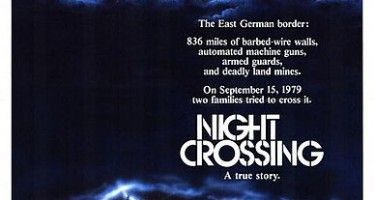'Charge It' to the state
MAY 18, 2010
By KATY GRIMES
“Charge it on my State VISA card,” is not something you’d expect to hear from a state employee ordering office supplies, or from the Department of Transportation with the billions of dollars spent annually.
While researching “How To do Business with California State Government,” I stumbled on a brochure titled the same, and discovered that small business owners can apply for a state sponsored CAL-Card VISA in order to receive payment from the state within two to three days, according to the Department of General Services (DGS). Surprisingly, state agencies also use the CAL-Card VISA.
What is not mentioned in the DGS brochure is the usual cost to the small business for using VISA credit – usually 2 percent to 3 percent of the charge. Ouch, however, getting paid quickly by the state probably wins out over having to discount the bill slightly, since government agencies are not known for rapid payment to vendors.
The other interesting tidbit about the state’s CAL-Card VISA is the “rebate” or “incentive” program. State agencies receive an “incentive” for using the CAL-Card VISA. Referred to as a “kickback” by private sectors business operators, this is an ethically questionable business practice.
The state however, seems to be enjoying the rebates and incentives.
The DGS Web site explains that the state of California entered into an agreement for credit card services with US Bank. The Visa card contract is available to government/tax-funded agencies and can be used to acquire goods and services. The initial contract period is Oct. 19, 2006 through Oct. 18, 2011.
A memo from the Department of General Services to state Procurement and Contracting Officers explaining the CAL-Card VISA program reads, “Using the CAL-Card as a payment mechanism whenever a VISA card is accepted will increase the quarterly rebate dollars the user agency will receive from U.S. Bank. These rebates decrease the net overall cost of goods and services procured by State agencies. For this reason, agencies are encouraged to use the CAL-Card as a payment mechanism whenever possible, including on Leveraged Procurement Agreement purchases.”
The Department of General Services lists the many “Cardholder Benefits” including, “no waiting for signatures on requisitions, check requests or invoices,” and “no waiting for a purchase order to be issued,” yet it does not spell out what replaces these important accountability processes.
The listed benefits to state agencies include, “Automates the procurement process while still maintaining control,” and “Provides access to robust purchasing data that can be used to manage procurement processes and facilitate merchant negotiations.” Private sector merchants should beware how their “purchasing data” is being used.
DGS literature about the CAL-Card program states that is a “no-cost” program, “unless an unpaid invoice has accrued late penalties.” However, the program does have a very large “one-time” $500 – $700 connection fee for the electronic payment service.
The late payment interest rate kicks in on day-46 from the invoice date… but why day 46? This is a highly unusual late-payment date. The annual interest rate is 3.256 percent set by the Department of Finance, which sounds innocuous unless there is real volume involved.
The “incentives” returned to the state for using the CAL-Card VISA are substantial and total more than $600,000 per quarter for 2008-2009. Varying rebates as large as $89,699.27 to the Department of Transportation and as small as $75.00 to the Vacaville Psychiatric PR department were paid. The 2009 – 4th quarter rebate total was $683,652.57, with nearly all California counties receiving some rebate payment.
A random selection of rebate payments include the Sacramento Municipal Utility District which receives $3,583.34, the Department of Corrections received rebates totaled $10,659.79, Franchise Tax Board received $1,561. 41, the City of Palmdale Travel received $1,572.69, Los Angeles County Transit Authority received rebates of $18,031.06, and the DMV got a $5,561.48 rebate in one quarter.
Calls to DGS for clarification on actual program costs, were not returned. It is not evident exactly how many state agencies and private sector businesses participate. Based on the large incentives and kickbacks going to state agencies, most if not all state agencies participate in the CAL-Card VISA program.
There are more questions than answers at this point.
- With cities, counties, state agencies and state-related entities all receiving “rebates” and “incentives” for spending state money using the CAL-Card VISA, where is the incentive to not spend?
- How is the rebate money classified in agency financials?
- How is rebate money spent?
- How many agencies make late and penalty payments, but still receive rebates back just because the CAL-Card VISA was used to make purchases?
What’s the motive? Banks get involved in deals only when there is a great deal of money to be made. We will be looking at what US Bank gets out of this arrangement, besides the volume of spending. State agencies are not known for stellar accounting practices, any more than most people are with someone else’s money. How many state agencies are current on their CAL-Card VISA payments may be the difference in substantial amounts of money for US Bank?
The link to the Excel spreadsheets listing the CAL-Card VISA US Bank rebates: CAL–Card Rebates to Agencies
Here is the website for CAL–Card
And for training: CAL–Card Program Workshop – US Bank – State of California
Related Articles
More people fleeing America to freedom
How shameful. America, once the refuge of millions fleeing tyranny, now is seeing its best and brights escape here to
Pasadena struck with Bell-like scandal
Pasadena has a reputation of being run by good-government liberals. But now it’s immersed in a scandal that could
Treasurer Chiang talks taxes and the economy
With the rising conversation about extending Proposition 30‘s temporary taxes, I asked state Treasurer John Chiang if he would advise




